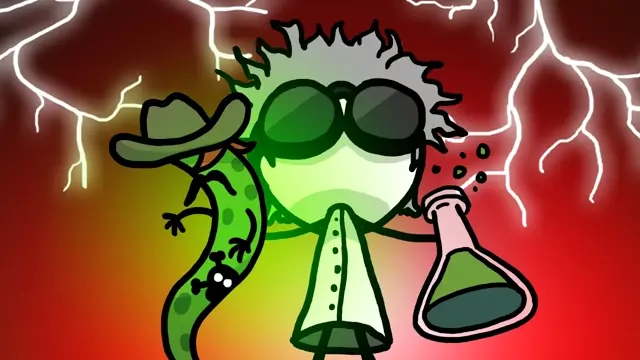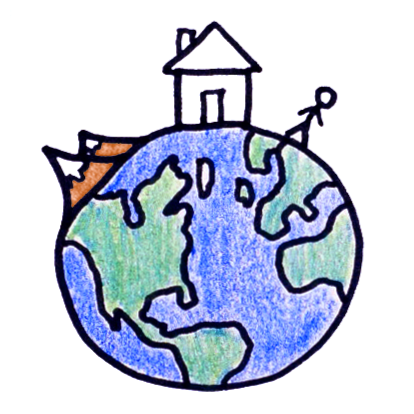2016-11-29
[public] 605K views, 13.9K likes, dislikes audio only
Thanks to http://www.givewell.org/ for sponsoring this video! To learn more about the Against Malaria Foundation, visit: http://www.givewell.org/AMF or https://www.againstmalaria.com.
Thanks also to our supporters on https://www.patreon.com/MinuteEarth
___________________________________________
FYI: We try to leave jargon out of our videos, but if you want to learn more about this topic, here are some keywords to get your googling started:
Malaria - a life-threatening disease caused by parasites that are transmitted to people through the bites of infected female Anopheles mosquitoes.
Parasite - an organism that benefits by living in/on a host organism and deriving nutrients at the host's expense.
Host - an organism in/on which another organism lives.
Protozoa - a group of single-celled microscopic animals (not bacteria or viruses) that includes the Plasmodium species.
Plasmodium - a genus of parasitic protozoa, many of which cause malaria in their hosts. Four species regularly infect humans: P. falciparum, P. vivax, P. malariae, & P. ovale.
P. falciparum - the Plasmodium species that kills the most people, by causing malignant malaria, the most dangerous form of malaria.
Anopheles gambiae - a ‘complex' of at least seven species of mosquitoes that are the main vectors of P. falciparum in sub-Saharan Africa.
Species complex - a group of closely related species that look so similar that the boundaries between them are often unclear.
Hunting and gathering - depending primarily on wild foods for subsistence
Paleontology - the study of fossils and what fossils tell us about the past, about evolution, and about how humans fit into the world.
___________________________________________
Credits (and Twitter handles):
Script Writer: Alex Reich (@alexhreich)
Script Editor: Emily Elert (@eelert)
Video Illustrator: Qingyang Chen
Video Director: Emily Elert (@eelert)
Video Narrator: Kate Yoshida (@KateYoshida)
With Contributions From: Henry Reich, Ever Salazar, Peter Reich, David Goldenberg
Music by: Nathaniel Schroeder: http://www.soundcloud.com/drschroeder
_________________________________________
Like our videos?
Subscribe to MinuteEarth on YouTube: http://goo.gl/EpIDGd
Support us on Patreon: https://goo.gl/ZVgLQZ
Also, say hello on:
Facebook: http://goo.gl/FpAvo6
Twitter: http://goo.gl/Y1aWVC
And find us on itunes: https://goo.gl/sfwS6n
___________________________________________
If you liked this week’s video, we think you might also like:
Amazing animation of seasonal temperature suitability for malaria https://goo.gl/63pYGt
Americapox CGPGrey video /youtube/video/JEYh5WACqEk
The History of Malaria, an Ancient Disease http://www.cdc.gov/malaria/about/history/
___________________________________________
References:
Carter, R., & Mendis, K. N. (2002). Evolutionary and historical aspects of the burden of malaria. Clinical microbiology reviews, 15(4), 564-594. http://cmr.asm.org/content/15/4/564.full
Gething, P. W., et al. (2011). A new world malaria map: Plasmodium falciparum endemicity in 2010. Malaria journal, 10(1), 1. http://malariajournal.biomedcentral.com/articles/10.1186/1475-2875-10-378
Gething, P. W., et al. (2011). Modelling the global constraints of temperature on transmission of Plasmodium falciparum and P. vivax. Parasites & Vectors, 4(1), 1. http://parasitesandvectors.biomedcentral.com/articles/10.1186/1756-3305-4-92
Hay, S. I., et al. (2004). The global distribution and population at risk of malaria: past, present, and future. The Lancet infectious diseases, 4(6), 327-336. https://www.ncbi.nlm.nih.gov/pmc/articles/PMC3145123/
Institute for Health Metrics and Evaluation (IHME). (2016). GBD Compare Data Visualization. Seattle, WA: IHME, University of Washington. Retrieved from http://vizhub.healthdata.org/gbd-compare.
Liu, W., et al. (2010). Origin of the human malaria parasite Plasmodium falciparum in gorillas. Nature, 467(7314), 420-425. doi: 10.1038/nature09442
Malaria: Fact sheet (April 2016). Retrieved from http://www.who.int/mediacentre/factsheets/fs094/en/
Packard, R. M. (2007). The making of a tropical disease: a short history of malaria (pp. 1-66 ). Baltimore.
Rich, S. M., et al. (2009). The origin of malignant malaria. Proceedings of the National Academy of Sciences, 106(35), 14902-14907. doi: 10.1073/pnas.0907740106
Shah, S. (2010). The Fever: how malaria has ruled humankind for 500,000 years (pp. 1-33). Macmillan.
Sundararaman, S. A., et al. (2016). Genomes of cryptic chimpanzee Plasmodium species reveal key evolutionary events leading to human malaria. Nature communications, 7. DOI: 10.1038/ncomms11078
Webb, J. L. (2009). Humanity's burden: a global history of malaria (pp. 1-91). Cambridge: Cambridge University Press.
World Health Organization. (2015). World malaria report 2015. World Health Organization. Retrieved from http://www.who.int/malaria/publications/world-malaria-report-2015/report/en/
https://www.patreon.com/minuteearth
/youtube/video/64pvlCtH-Oo?t=18.778999
/youtube/video/4DF94Wvtekk
/youtube/channel/UCeiYXex_fwgYDonaTcSIk6w
https://www.patreon.com/minuteearth

